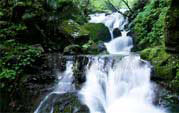Water for the 21st Century
It has been predicted that water will be the defining crisis for mankind in the 21st century due to the increased demands of population growth, agricultural demand, industrial production and shrinking availability of fresh water.
Many major rivers such as the Nile and Rio Grande ——- do not flow all of the way to the ocean at certain parts of the year because every bit of it is consumed or evaporated. Underground aquifers are being pumped at rates faster than they can recharge. Wells where once a farmer required only a bucket and rope now require large pumps to raise the water hundreds of feet.
The oceans are also experiencing increased pollution at an alarming rate. Jacques Cousteau once called them the “ultimate sewer.” Sanitary wastes from some countries flow untreated or only partially treated into the ocean.———
There has also been an increase in the development of dead zones in hundreds of the world’s coastal regions. These dead zones occur mostly in the spring when rainfall carries runoff from farms within the watershed that is laden with fertilizers containing high levels of nitrogen and phosphorous. Although some of the fertilizer is taken up by plants, most of it accumulates in the soil before it is washed to the coast and eventually to the deep ocean. It has been estimated that only 10 to 15% of nitrogen created for food production actually ends up as food. The rest of the nitrogen goes into the environment. This increase in nitrogen spurs a brief frenzy of algae growth that depletes the water of oxygen. Species such as fish, clams, shrimp and other life forms can be wiped out. These dead zones usually appear at the mouths of rivers and can grow up to 31,000 square miles. In 2008, an international team of researches reported that oxygen levels in some seas had dropped up to 15% since 1960.

